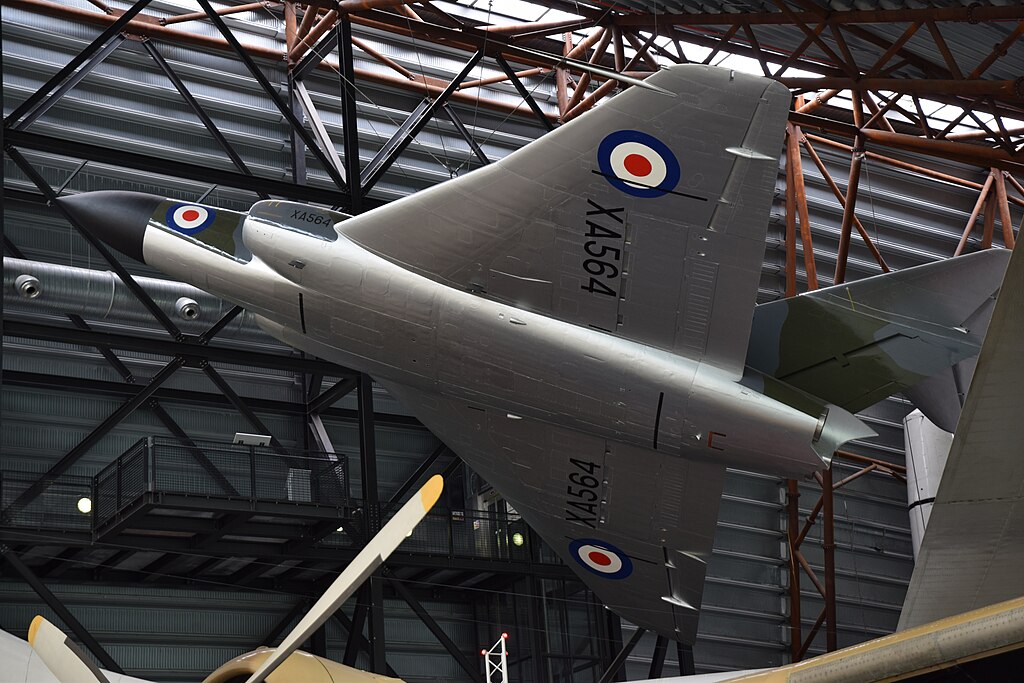Gloster Javelin FAW1 (50116110362)
Gloster Javelin FAW1 at the RAF Museum, Cosford, Shropshire, 8 July 2020. The Gloster Javelin was designed to meet the RAF’s first specifications for a jet night fighter (in 1946 & 1948) to equip all night and all-weather fighter squadrons by 1952. Unfortunately, problems developing the Javelin meant that it looked very unlikely this target could be met, exacerbated by further delays due to an economy drive by the government. Interim night fighter adaptations of, first, the Gloster Meteor, then the de Havilland Vampire and then the de Havilland Venom had to be procured. But the Korean War changed things and suddenly the Javelin became a super-priority project. Armstrong-Whitworth were involved in providing support for the Javeln's development.
For the time, the Javelin was a very advanced, radar-equipped design, the first twin-engined delta fighter in the world and designed to have a very high performance, a long endurance and the ability to intercept Soviet bombers at great altitude at transonic speeds.
The first prototype flew in 1951 and five more followed until 1955 in order to perfect the design; however, several accidents occurred, which delayed the introduction of the FAW1 (first flight in 1954) into service until 1956. Several improved marks followed in relatively small numbers, the main version being the much improved FAW8 of 1958 with reheat and de Havilland Firestreak missiles. The even more improved FAW9, converted from FAW7’s, followed in 1960. Trainer versions were also produced. The Javelin finally left first line fighter service in 1968. It was also the last aircraft produced by Gloster.
A prototype thin-wing, supersonic version with advanced Red Dean missiles was under construction in 1957 but was cancelled when a Defence Review saw no future in manned combat aircraft!Więcej informacji o licencji można znaleźć tutaj. Ostatnia aktualizacja: Mon, 21 Nov 2022 01:43:16 GMT
